Winslow Homer (1836–1910) stands as one of the most prominent figures in American art. Known for his exceptional ability to capture the natural world and human interaction with it, Homer’s work spans various themes, including rural life, maritime scenes, and the rugged American landscape. His mastery in both watercolor and oil paintingPainting is a fundamental form of visual art that has been practiced for thousands of years. It involves applying pigment to a surface such as canvas, paper, or a wall. Painting can be explored through various styles, techniques, and mediums, each offering unique possibilities for expression and creativity. Historical Background • Ancient Beginnings: The history of painting dates back to More has left an indelible mark on American art history.
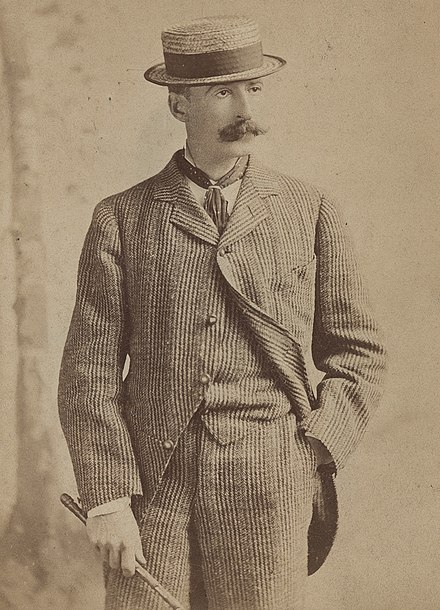
Early Life and Career Beginnings
Born in Boston, Massachusetts, Homer grew up in a modest family. His mother, an amateur watercolorist, was a significant early influence on his artistic development.
- Apprenticeship: Homer began his career as an apprentice to a commercial lithographer, which provided him with a foundational understanding of drawingDrawing is a foundational art form that involves creating images on a surface, typically paper, using tools such as pencils, pens, and charcoal. It is a versatile medium that allows artists to express ideas, emotions, and stories through lines, shapes, and shading. Historical Background • Prehistoric Beginnings: The earliest known drawings date back to prehistoric times, with cave drawings found More and printmaking.
- Illustration Work: In 1859, he moved to New York City and began working as a freelance illustrator for publications like Harper’s Weekly. His illustrations of the Civil War brought him national recognition, showcasing his ability to depict human drama and emotion.
Transition to PaintingPainting is a fundamental form of visual art that has been practiced for thousands of years. It involves applying pigment to a surface such as canvas, paper, or a wall. Painting can be explored through various styles, techniques, and mediums, each offering unique possibilities for expression and creativity. Historical Background • Ancient Beginnings: The history of painting dates back to More
Homer’s transition from illustration to paintingPainting is a fundamental form of visual art that has been practiced for thousands of years. It involves applying pigment to a surface such as canvas, paper, or a wall. Painting can be explored through various styles, techniques, and mediums, each offering unique possibilities for expression and creativity. Historical Background • Ancient Beginnings: The history of painting dates back to More marked a significant shift in his career. He began to focus on oil paintingPainting is a fundamental form of visual art that has been practiced for thousands of years. It involves applying pigment to a surface such as canvas, paper, or a wall. Painting can be explored through various styles, techniques, and mediums, each offering unique possibilities for expression and creativity. Historical Background • Ancient Beginnings: The history of painting dates back to More in the 1860s and later embraced watercolor, a medium that would become central to his oeuvre.
- Early Paintings: His early works, such as “Prisoners from the Front” (1866), reflected his Civil War experiences, portraying the conflict with a sense of realismRealism is an art movement that emerged in the mid-19th century, emphasizing the depiction of subjects as they appear in everyday life. It rejects the idealized forms and dramatic expressions of Romanticism, focusing instead on accuracy, truthfulness, and the mundane aspects of the human experience. Realism strives to capture the world in a straightforward and unembellished manner. Gustave Courbet, The More and humanity.
- Watercolor Mastery: By the 1870s, Homer had begun to experiment with watercolor, creating vibrant and dynamic pieces that demonstrated his keen observation of nature and light.

Themes and Techniques
Homer’s work is characterized by several recurring themes and techniques, which evolved throughout his career.
- Rural and Domestic Life: In his early career, Homer often depicted scenes of rural and domestic life. Paintings like “Snap the Whip” (1872) celebrate the simplicity and innocence of childhood in rural America.
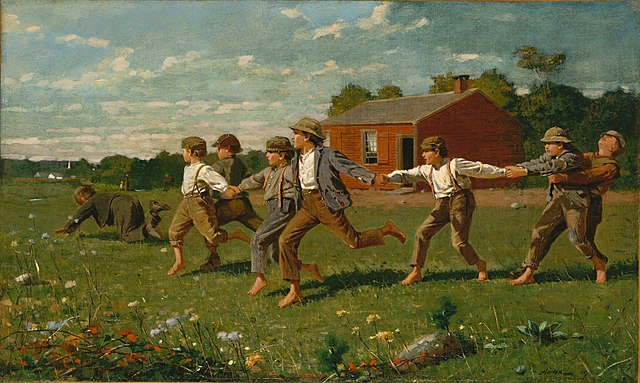
- Maritime Scenes: Homer’s fascination with the sea is evident in his numerous maritime paintings. Works like “The Gulf Stream” (1899) highlight the power and unpredictability of the ocean, often portraying man’s struggle against nature.
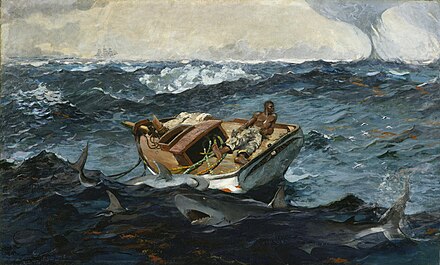
- American Wilderness: Later in his career, Homer focused on the rugged landscapes of the American wilderness, particularly in Maine and the Adirondacks. His paintings capture the raw beauty and isolation of these environments.
Innovative Techniques
Homer’s innovative techniques set him apart from his contemporaries and contributed to his lasting legacy.
- Use of Light and Color: Homer had a remarkable ability to capture the effects of light and color, particularly in his watercolorsWatercolors are a unique and expressive medium, beloved for their translucency and fluidity. This type of paint is water-based, allowing artists to create delicate washes, vibrant hues, and details with ease. Historical Background • Ancient Origins: Watercolor painting dates back to ancient civilizations, including Egypt and China, where it was used for manuscript illumination and decorative arts. • Renaissance Revival: More. His use of bold, vibrant colors and dynamic compositions brought a sense of immediacy and realismRealism is an art movement that emerged in the mid-19th century, emphasizing the depiction of subjects as they appear in everyday life. It rejects the idealized forms and dramatic expressions of Romanticism, focusing instead on accuracy, truthfulness, and the mundane aspects of the human experience. Realism strives to capture the world in a straightforward and unembellished manner. Gustave Courbet, The More to his work.
- Attention to Detail: Homer’s meticulous attention to detail, whether in the texture of a wave or the expression of a child, added depth and authenticity to his paintings.
- Fluid BrushworkMasterful brushwork is often the defining feature of great artists, where the brush becomes an extension of their arm, allowing paint to flow effortlessly onto the canvas. These artists demonstrate a profound understanding of their medium, knowing precisely when to apply thick, textured strokes or smooth, delicate ones. Their skill extends beyond mere color application; it's about the artistry of More: His fluid and expressive brushworkMasterful brushwork is often the defining feature of great artists, where the brush becomes an extension of their arm, allowing paint to flow effortlessly onto the canvas. These artists demonstrate a profound understanding of their medium, knowing precisely when to apply thick, textured strokes or smooth, delicate ones. Their skill extends beyond mere color application; it's about the artistry of More, especially in his watercolorsWatercolors are a unique and expressive medium, beloved for their translucency and fluidity. This type of paint is water-based, allowing artists to create delicate washes, vibrant hues, and details with ease. Historical Background • Ancient Origins: Watercolor painting dates back to ancient civilizations, including Egypt and China, where it was used for manuscript illumination and decorative arts. • Renaissance Revival: More, allowed him to convey movement and atmosphere with great skill.
Notable Works
Homer’s extensive body of work includes many pieces that have become iconic in American art.
- “Breezing Up (A Fair Wind)” (1876): This paintingPainting is a fundamental form of visual art that has been practiced for thousands of years. It involves applying pigment to a surface such as canvas, paper, or a wall. Painting can be explored through various styles, techniques, and mediums, each offering unique possibilities for expression and creativity. Historical Background • Ancient Beginnings: The history of painting dates back to More of a father and his sons sailing on a breezy day captures the joy and adventure of maritime life.
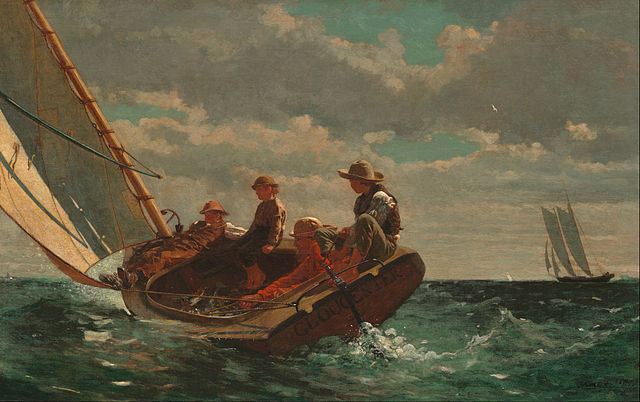
- “The Gulf Stream” (1899): A dramatic portrayal of a lone sailor adrift in a turbulent sea, this work exemplifies Homer’s ability to convey the power of nature and human endurance.
- “Hound and Hunter” (1892): This paintingPainting is a fundamental form of visual art that has been practiced for thousands of years. It involves applying pigment to a surface such as canvas, paper, or a wall. Painting can be explored through various styles, techniques, and mediums, each offering unique possibilities for expression and creativity. Historical Background • Ancient Beginnings: The history of painting dates back to More depicts a young boy hunting in a swamp, showcasing Homer’s talent for rendering detailed, dynamic scenes of human activity.
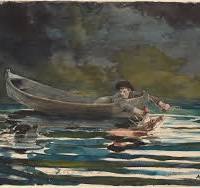
Challenges and Criticism
Despite his success, Homer faced challenges and criticism throughout his career.
- Critical Reception: Some of Homer’s work was initially met with criticism for its perceived lack of polish or conventional beauty. However, his unique vision and technique eventually earned him widespread acclaim.
- Isolation: Later in life, Homer chose to live and work in relative isolation in Prouts Neck, Maine. This seclusion allowed him to focus intensely on his art but also meant he was somewhat removed from the mainstream art world.
Legacy and Influence
Winslow Homer’s legacy endures through his profound impact on American art and his influence on subsequent generations of artists.
- Pioneering American Art: Homer is celebrated as a pioneer who helped define American art in the 19th and early 20th centuries. His work reflects a deep connection to the American landscape and spirit.
- Influence on Future Artists: Homer’s innovative techniques, particularly his mastery of watercolor, have inspired countless artists. His emphasis on realismRealism is an art movement that emerged in the mid-19th century, emphasizing the depiction of subjects as they appear in everyday life. It rejects the idealized forms and dramatic expressions of Romanticism, focusing instead on accuracy, truthfulness, and the mundane aspects of the human experience. Realism strives to capture the world in a straightforward and unembellished manner. Gustave Courbet, The More and naturalism continues to resonate in contemporary art.
- Cultural Icon: Homer’s paintings are held in major museums and collections worldwide, including the Metropolitan Museum of Art, the National Gallery of Art, and the Museum of Fine Arts, Boston.
Conclusion
Winslow Homer’s extraordinary ability to capture the essence of the natural world and human experience has cemented his place as one of America’s greatest artists. His work, characterized by its vivid detail, dynamic composition, and emotional depth, continues to captivate and inspire. Homer’s enduring legacy is a testament to his genius and his significant contributions to the world of art.
